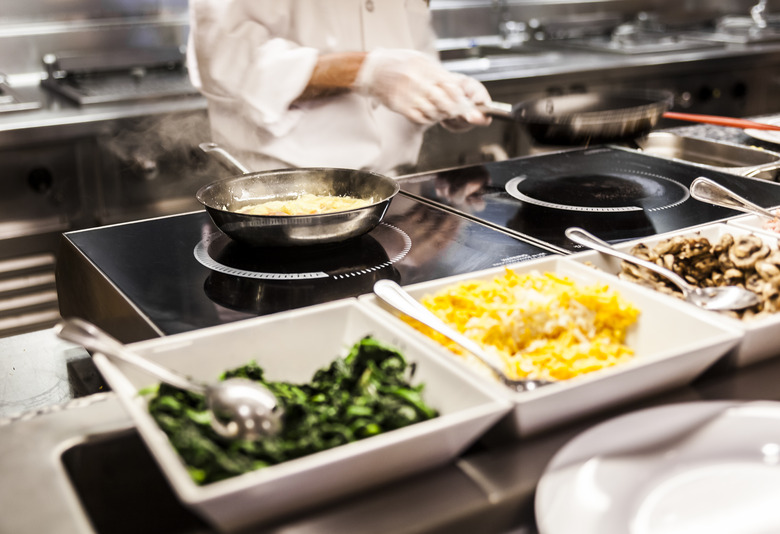What Is The Difference Between Cruise Ship Kitchens And Restaurant Kitchens?
Life aboard a cruise ship is pretty sweet. There's a pool; plenty of options for exercise, rest and relaxation; unlimited libations; plenty of activities; exciting ports of call and, of course, all you care to eat. Indeed, there's food seemingly everywhere, served at dining rooms and restaurants, offered at poolside snack bars, delivered to staterooms and constantly replenished at buffets. But how exactly does all this food stay hot and fresh while being turned out around the clock? And how exactly do onboard kitchens differ from restaurant kitchens?
The Most Annoying Things You Can Do on a Cruise
We had the opportunity to learn firsthand while onboard Viking Ocean Cruises' Viking Sky, which is one of six nearly-identical ships in the cruise line's fleet (a seventh will be unveiled in 2021). These luxurious ships are relatively small, with only 930 guests and a length of 745 feet (as opposed to, say, Royal Caribbean's Anthem of the Seas, which can hold more than 4,000 passengers and is 1,141 feet long), but according to Viking Sky's executive chef, the basic principles of how cruise ship kitchens operate are consistent across the industry.
"Everything we serve is made on-board, from scratch, from breads to sauces," the chef, who previously served as head chef on Royal Caribbean's Oasis of the Seas (then the largest ship in the world), told us. "Thousands of recipes are developed by a corporate team and stored on file, and the menu changes every day."
The fundamentals of the Viking Sky's kitchen don't differ too much from those of high-end restaurant kitchens; everything is just scaled up to serve a much higher volume of guests. Cruise ships, unlike some restaurants, don't get fresh ingredients delivered every day, of course. Raw ingredients are sourced based on which dishes are slated to be served, arrive at the beginning of the voyage and, depending on how long the cruise lasts, are replenished at selected ports of call. The inventory is meticulously cataloged and stored in massive pantries, refrigerators and freezers.
Every morning at 7:45, the chef meets with his team (which includes 16 sous chefs who run the many different departments — bakery, seafood, cold appetizers, etc.) and goes over the plan for the day. He keeps an eye on service throughout the day, and at 5 p.m. he meets with them again to taste all of the dinner menu's dishes. If he notices any issues, the team has an hour to fix them before dinner service begins.
Once service begins, orders arrive at the kitchen electronically; every waiter is equipped with an iPhone that sends orders to screens mounted throughout the kitchen. When an order comes in, it's treated just like it would be at a nice restaurant, moving station to station until the dish is complete. An expediter then routes the order to the correct table.
There are ways in which this kitchen differs from restaurant kitchens, though. For one, the kitchen staff works seven days a week, with no days off during their entire contractual period, which can last from four to six months (if they're not feeling well and need to call in sick, a doctor will examine them first). It may be grueling, but the end result is a team that works incredibly well together, like a well-oiled machine, leading to a consistently high-quality product.
The biggest difference between cruise ship kitchens and restaurant kitchens, however, is a simple one: In order to prevent onboard fires, nothing is cooked over an open flame in a cruise ship kitchen. This means that there are no gas-powered stoves or ovens and the only open flames in the kitchen are blowtorches used for crème brûlée. Instead, everything is cooked via electric stovetops and ovens, which the chef assured us the cooks get used to fairly quickly.
So the next time you're on a cruise ship and about to dig into that overflowing buffet spread, don't forget the amount of coordination and effort that went into every component of that dish, recipe development and ingredient sourcing on up. And when you're finished, you can go experience a crazy cruise ship amenity that was unheard-of just a few years ago.
